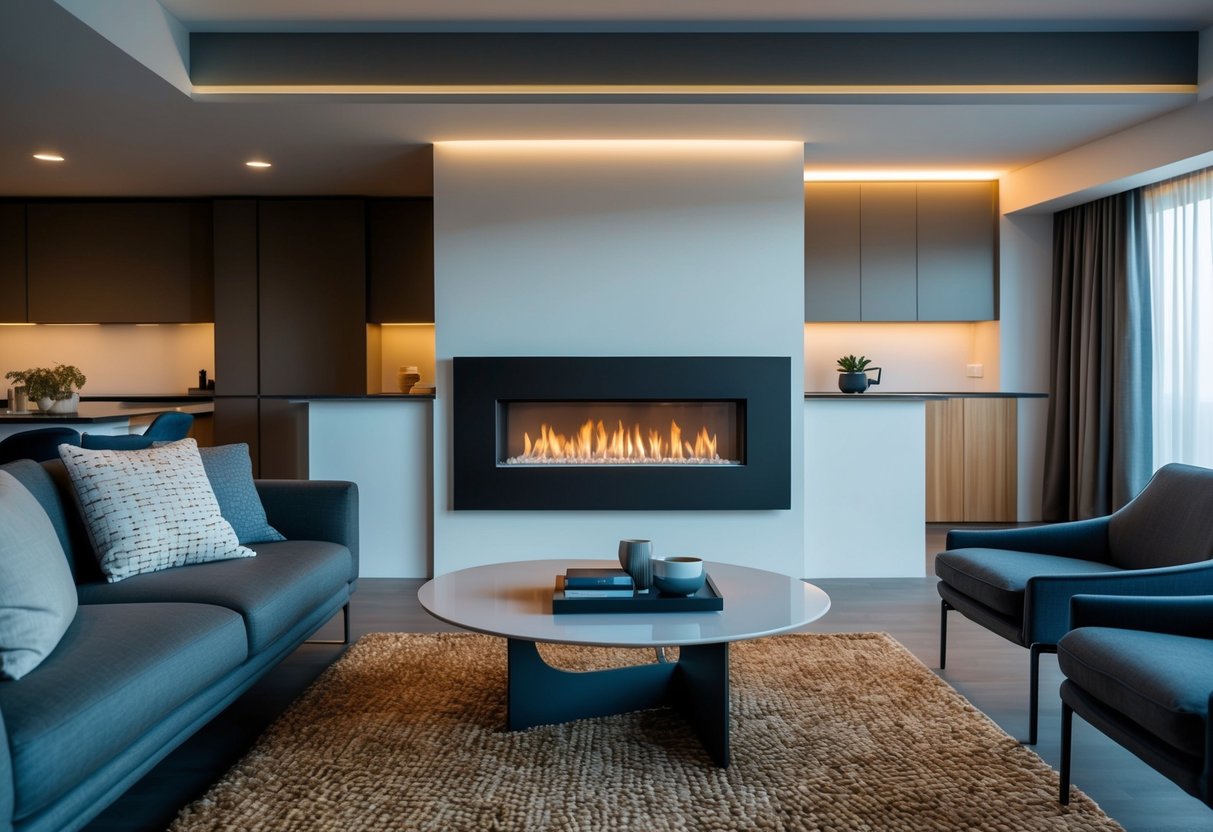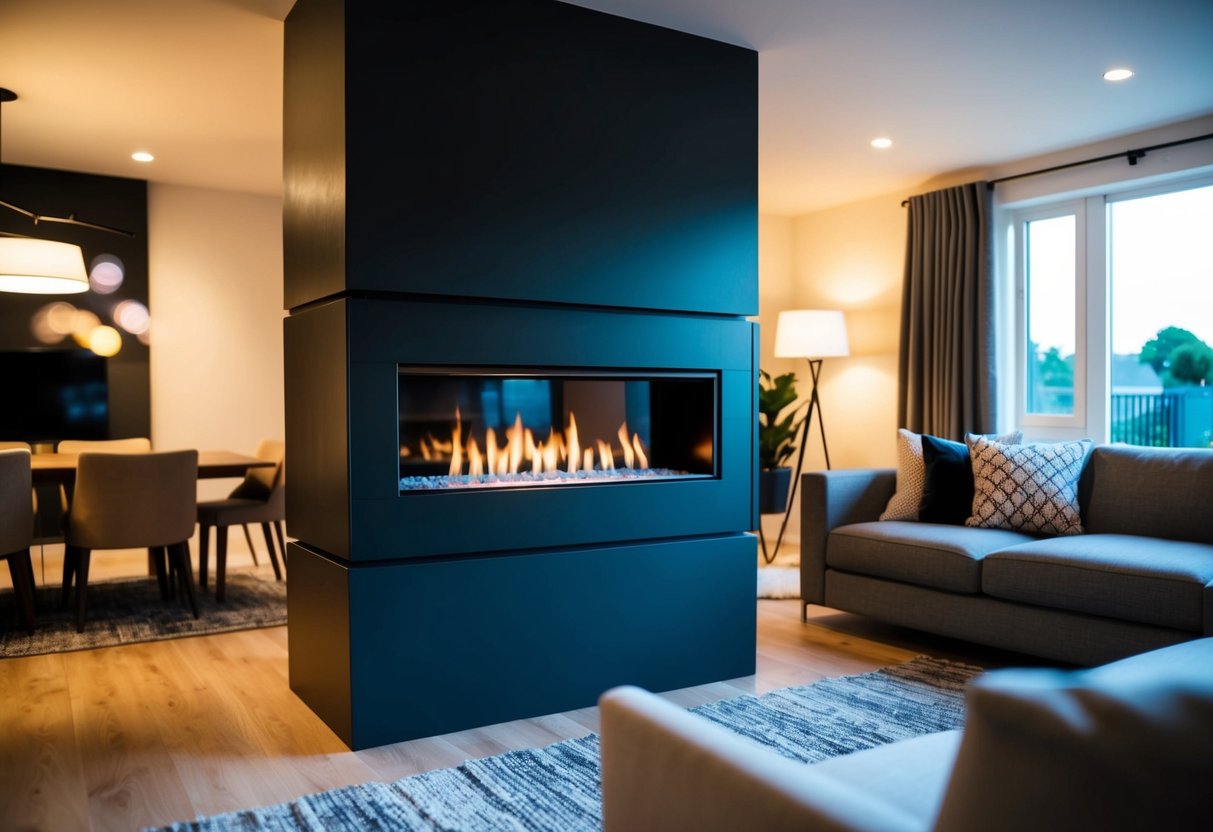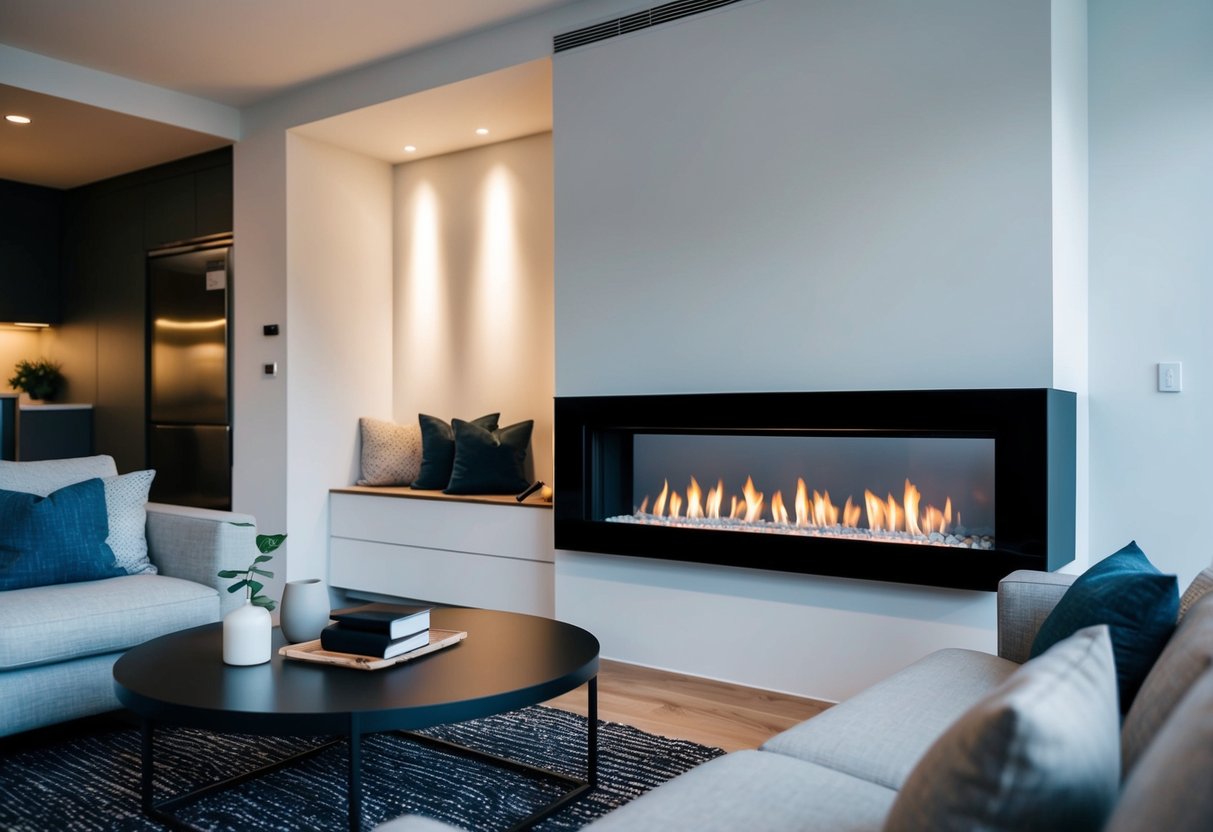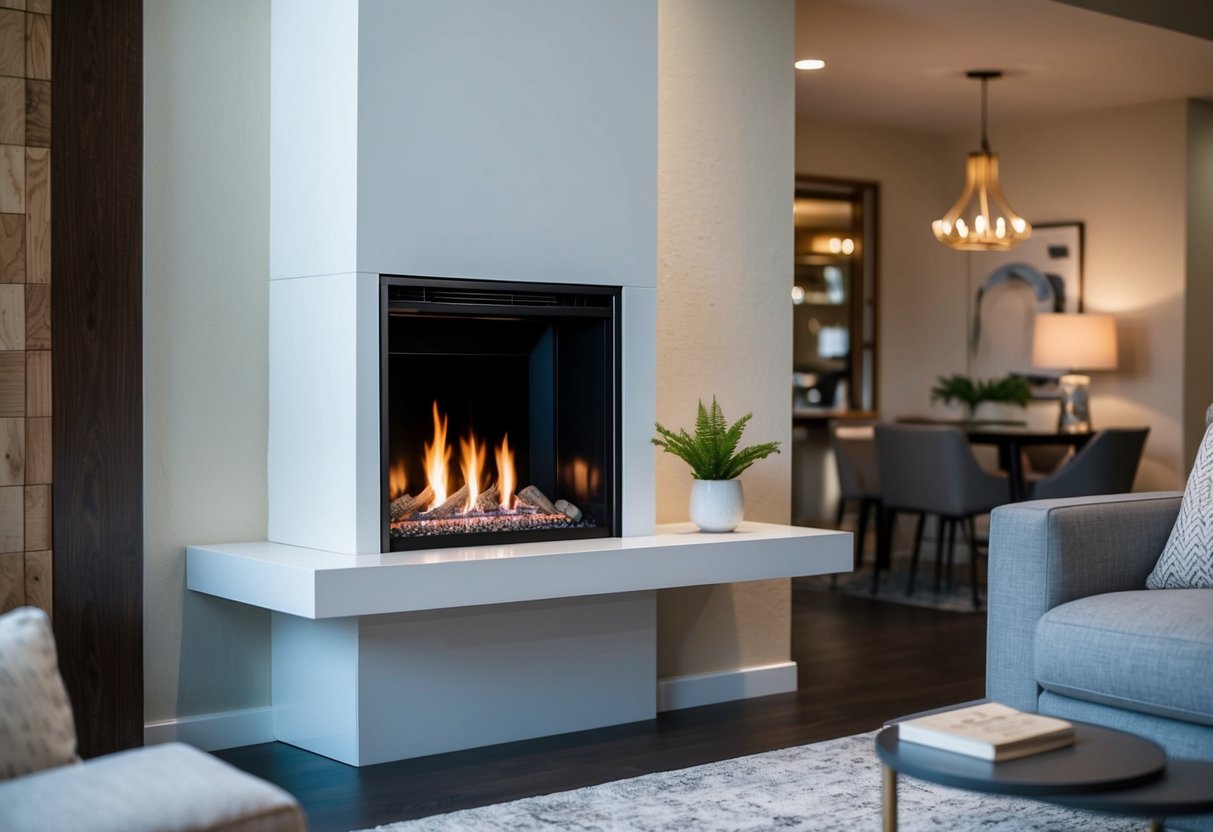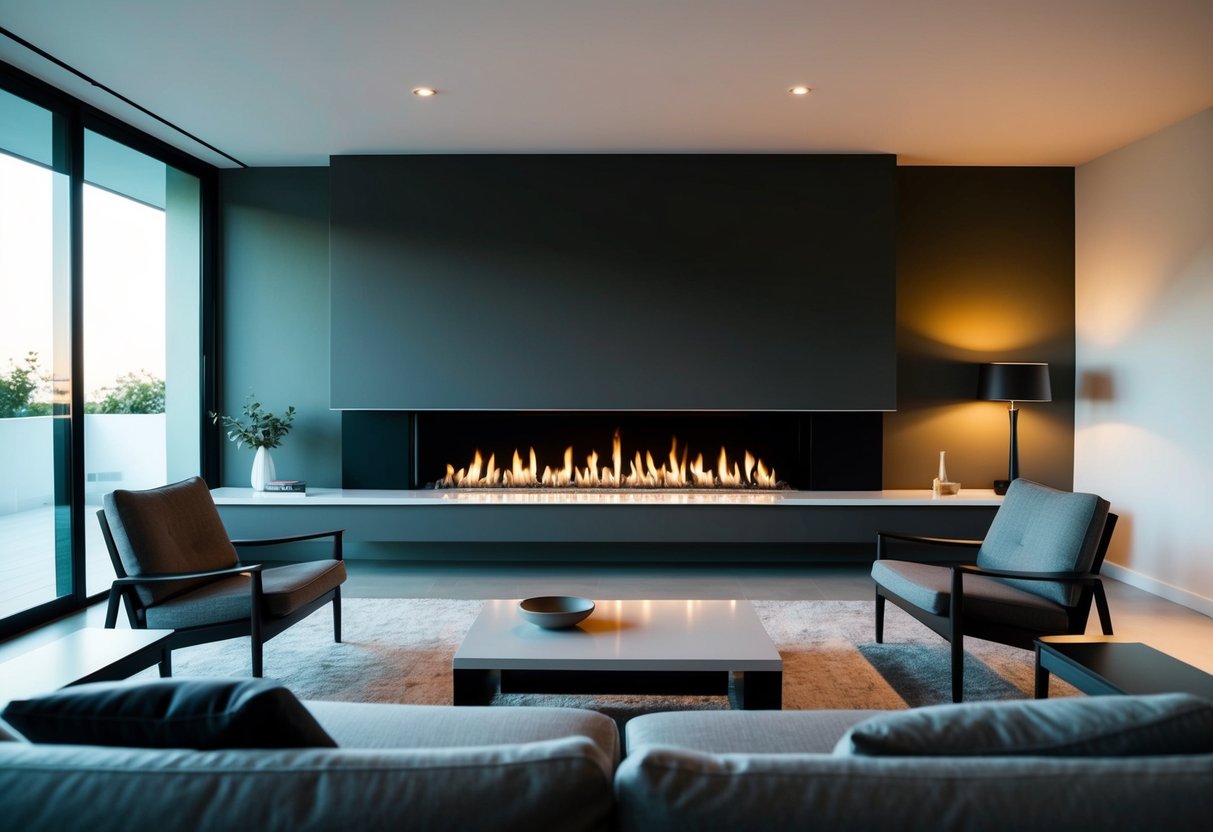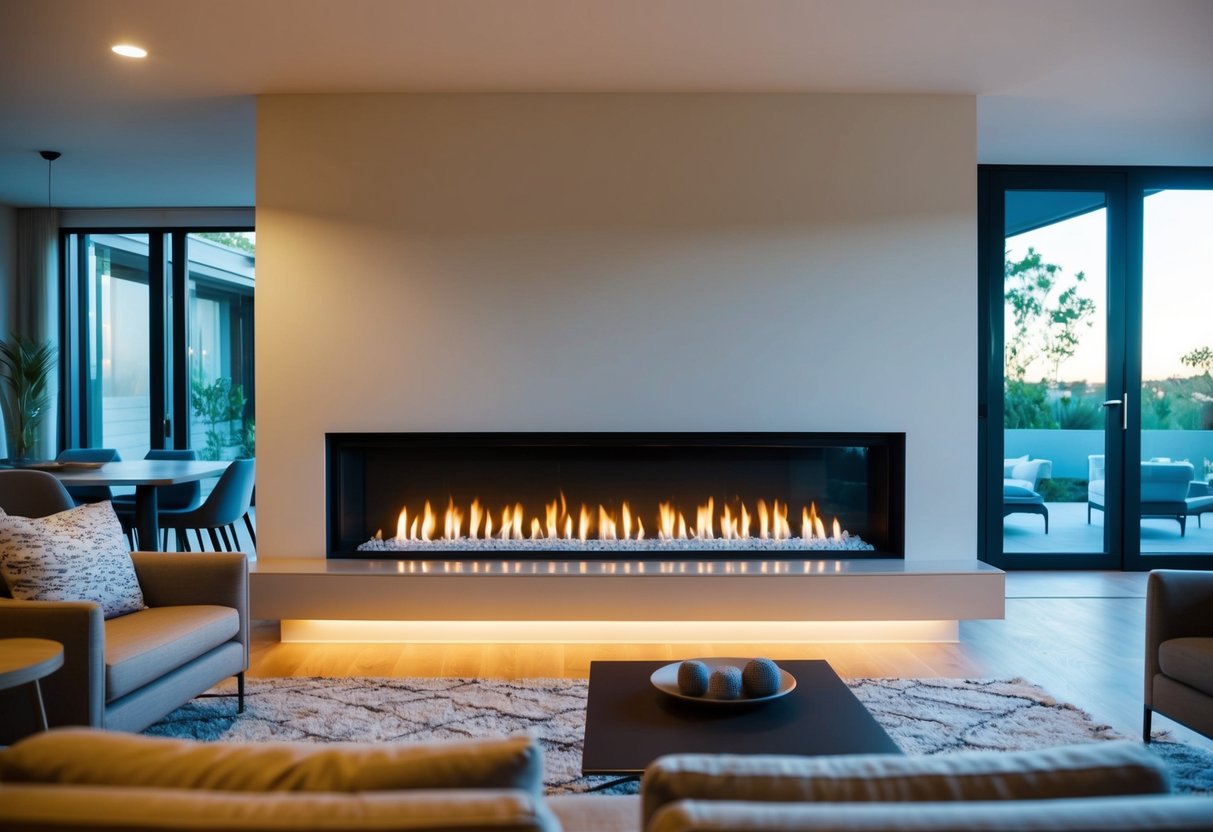Introduction
Chimneyless gas fireplaces are revolutionizing home heating solutions, offering a blend of modern aesthetics and practical efficiency. These innovative appliances provide warmth and ambiance without the need for traditional chimney structures, making them an attractive option for homeowners seeking contemporary heating alternatives.
Chimneyless gas fireplaces provide an efficient heating solution with lower upfront costs compared to traditional fireplaces that require a chimney. They offer the cozy atmosphere of a real fire while eliminating the maintenance and installation complexities associated with conventional wood-burning units. This makes them particularly appealing for urban dwellers, apartment owners, and those looking to upgrade their living spaces with minimal structural modifications.
Ventless gas fireplaces come in various styles and sizes, catering to diverse home decor preferences and spatial requirements. From sleek linear designs to classic freestanding models, these fireplaces can serve as striking focal points in any room while delivering reliable warmth and comfort.
Key Takeaways
- Chimneyless gas fireplaces offer efficient heating without traditional chimney structures
- These modern appliances provide lower upfront costs and reduced maintenance compared to conventional fireplaces
- Ventless gas fireplaces come in diverse styles to suit various home aesthetics and spatial needs
Understanding Chimneyless Gas Fireplaces
Chimneyless gas fireplaces offer a modern heating solution that combines efficiency with aesthetic appeal. These innovative appliances provide warmth and ambiance without the need for traditional chimney structures.
The Basics of Gas Fireplaces
Gas fireplaces operate using either natural gas or propane as fuel. They ignite quickly and provide instant heat, making them convenient for homeowners. The flame display can be adjusted to suit personal preferences, creating a cozy atmosphere.
These fireplaces are typically more energy-efficient than wood-burning alternatives. They produce less waste and require minimal maintenance. Installation is often simpler and more flexible compared to traditional fireplaces.
Gas fireplaces come with safety features like automatic shut-off valves and oxygen depletion sensors. These ensure safe operation and provide peace of mind for users.
Vented vs. Ventless Systems
Gas fireplaces are categorized into two main types: vented and ventless systems. Each has distinct characteristics and installation requirements.
Vented systems include direct vent and natural vent options. Direct vent fireplaces use a sealed combustion system, drawing air from outside and expelling exhaust through a dual-channel vent. Natural vent models utilize existing chimneys for exhaust.
Ventless gas fireplaces, also known as vent-free, don’t require external venting. They burn gas more efficiently, retaining heat within the living space. These units are highly versatile in terms of placement but may not be suitable for all homes.
Ventless models may have limitations on usage duration and room size due to potential air quality concerns. They often include oxygen depletion sensors as a safety measure.
Benefits of Going Chimneyless
Chimneyless gas fireplaces offer numerous advantages for homeowners seeking efficient heating solutions. These modern appliances combine energy efficiency, design flexibility, and enhanced safety features to provide a superior home heating experience.
Improved Energy Efficiency
Chimneyless gas fireplaces are designed to maximize heat output while minimizing energy consumption. They typically achieve efficiency ratings of up to 99%, significantly higher than traditional wood-burning fireplaces.
These units direct more heat into the living space rather than losing it up a chimney. The absence of a chimney eliminates heat loss and drafts, contributing to better overall home insulation.
Many models feature adjustable BTU outputs, allowing users to fine-tune their heating needs. This flexibility helps reduce energy waste and lowers utility bills.
Chimneyless gas fireplaces often incorporate zone heating capabilities, enabling homeowners to heat specific areas of their home more efficiently.
Flexibility in Home Design
The elimination of a chimney opens up new possibilities for fireplace placement within a home. Chimneyless units can be installed in various locations, including interior walls, corners, and even floating designs.
These fireplaces come in a wide range of styles, from traditional to ultra-modern, allowing homeowners to match their décor preferences. Some models feature customizable flame patterns and media options like glass beads or ceramic logs.
Installation costs are typically lower compared to traditional fireplaces, as there’s no need for expensive chimney construction or modification of existing structures.
Compact designs make chimneyless gas fireplaces suitable for smaller homes, apartments, or rooms where space is at a premium.
Enhanced Safety Features
Modern chimneyless gas fireplaces incorporate advanced safety technologies to protect homeowners. Many models include automatic shut-off mechanisms that activate if oxygen levels in the room become too low.
These units often feature sealed combustion chambers, which separate the burning process from the indoor air. This design helps maintain indoor air quality and reduces the risk of carbon monoxide exposure.
Most chimneyless gas fireplaces come equipped with built-in carbon monoxide detectors for added safety. Some models also include child-lock features to prevent accidental activation.
The absence of open flames and flying sparks significantly reduces fire hazards compared to traditional wood-burning fireplaces.
Installation and Maintenance
Installing and maintaining a chimneyless gas fireplace requires careful consideration of safety, efficiency, and air quality. Professional expertise is crucial for proper setup and ongoing care.
Professional Installation Considerations
Professional installation is essential for chimneyless gas fireplaces. A licensed professional will ensure proper gas line connections and venting, if applicable. They’ll assess the home’s structure and recommend the best location for optimal heating and safety.
Venting options vary depending on the type of gas fireplace. Direct vent models require an exterior wall for ventilation, while vent-free units don’t need external venting.
The installer will also verify proper clearance from combustible materials and set up any necessary electrical connections.
Maintaining Indoor Air Quality
Vent-free gas fireplaces require special attention to indoor air quality. These units release combustion byproducts directly into the living space.
To maintain air quality:
- Ensure adequate room ventilation
- Use the fireplace for shorter periods
- Keep windows slightly open during operation
- Install carbon monoxide detectors in the home
Regular cleaning of the fireplace and surrounding area helps prevent dust buildup and ensures efficient operation. Homeowners should follow manufacturer guidelines for air quality maintenance.
Regular Safety Checks
Safety checks are crucial for chimneyless gas fireplaces. Annual inspections by a qualified technician should include:
- Examining gas connections for leaks
- Checking burner operation and flame appearance
- Inspecting glass panels for cracks or damage
- Testing safety shut-off systems
- Cleaning the fireplace interior and logs
Homeowners can perform monthly visual inspections, looking for any signs of wear or damage. They should test carbon monoxide detectors regularly and replace batteries as needed.
Prompt attention to any unusual odors or sounds during fireplace operation is essential. If issues arise, the unit should be turned off and a professional contacted immediately.
Design and Aesthetics
Modern chimneyless gas fireplaces offer a wide range of design options to suit various interior styles. These versatile heating solutions blend functionality with aesthetics, allowing homeowners to create stunning focal points in their living spaces.
Choosing the Right Gas Fireplace for Your Space
Gas fireplace inserts come in various styles to complement different room layouts and decor preferences. Compact models are ideal for smaller areas, while linear designs create a sleek, contemporary look in larger spaces.
Freestanding units offer flexibility in placement, making them suitable for open-concept living areas. For a more traditional appearance, some gas fireplaces feature ceramic logs or faux logs that mimic the look of a wood-burning fireplace.
The flame pattern is an essential aspect of gas fireplace design. Many models boast realistic flames that closely resemble those of a natural wood fire, enhancing the ambiance of the room.
Customizing with Fireplace Accessories
Fireplace accessories play a crucial role in personalizing the look of a gas fireplace. Decorative screens can add a touch of elegance while providing an extra layer of safety.
Mantels and surrounds are available in various materials, including wood, stone, and metal, allowing homeowners to match their fireplace to their existing decor. Some modern gas fireplace designs incorporate concrete finishes for an industrial-chic aesthetic.
Glass beads or river rocks can replace traditional logs for a more contemporary look. LED lighting options in some models allow users to customize the flame color, creating a unique atmosphere.
Remote controls and smart home integration features add convenience, enabling users to adjust flame height and heat output with ease.
Operational Tips and Safety Precautions
Gas fireplaces without chimneys offer efficient heating, but proper operation and safety measures are crucial. Understanding heat output and implementing security measures ensure optimal performance and user safety.
Understanding BTUs and Heat Output
BTU (British Thermal Unit) measures the heat output of gas fireplaces. Higher BTU ratings indicate greater heating capacity. A typical ventless gas fireplace produces 20,000 to 40,000 BTUs per hour.
Proper sizing is essential. A fireplace with too high BTU output can overheat small spaces, while insufficient BTUs may not adequately warm larger areas.
Ventless fireplaces are highly efficient, converting nearly 100% of fuel into heat. This efficiency translates to lower operating costs and improved heating performance.
Consider room size, insulation, and climate when selecting a fireplace. A professional can help determine the ideal BTU rating for specific heating needs.
Security Measures to Consider
Safety is paramount with chimneyless gas fireplaces. Oxygen depletion sensors (ODS) are critical safety features. These sensors monitor oxygen levels and automatically shut off the fireplace if levels drop too low.
Regular maintenance is essential. Annual inspections by qualified technicians ensure proper functioning and identify potential issues.
Proper ventilation is crucial. While ventless, these fireplaces still require some air circulation. Keep doors slightly open or windows cracked during operation.
Monitor carbon monoxide levels. Install carbon monoxide detectors near the fireplace and throughout the home. Test these devices regularly.
Maintain a safe clearance zone around the fireplace. Keep flammable materials at least three feet away from the unit.
Supervise children and pets around the fireplace. The glass front can become extremely hot during operation.
Frequently Asked Questions
Ventless gas fireplaces offer modern heating solutions with specific safety, air quality, and efficiency considerations. These units can be installed in homes without existing chimneys and require unique maintenance practices.
What are the safety considerations when installing a ventless gas fireplace?
Ventless gas fireplaces require proper installation to ensure safety. A professional should assess the room size and ventilation to prevent oxygen depletion. Carbon monoxide detectors are essential near the unit.
Regular maintenance checks help identify potential gas leaks or malfunctions. It’s crucial to follow manufacturer guidelines for clearances from combustible materials.
How does a ventless gas fireplace maintain indoor air quality?
Ventless gas fireplaces use advanced combustion technology to minimize emissions. They burn fuel more completely, reducing harmful byproducts.
Many models include oxygen depletion sensors that shut off the unit if oxygen levels drop too low. Regular cleaning and proper use help maintain optimal air quality.
Can a ventless gas fireplace be added to an existing home without a chimney?
Yes, ventless gas fireplaces can be installed in homes without chimneys. This flexibility makes them suitable for various spaces, including apartments and rooms without existing fireplaces.
Installation typically requires a gas line connection and adherence to local building codes. A professional assessment ensures the chosen location meets safety requirements.
What is the level of energy efficiency in modern ventless gas fireplaces?
Modern ventless gas fireplaces are highly energy-efficient. They convert nearly all fuel into heat, with some models achieving up to 99% efficiency.
This efficiency translates to lower operating costs compared to traditional fireplaces. The direct heat output can supplement a home’s primary heating system effectively.
How do modern ventless gas fireplaces distribute heat within a room?
Ventless gas fireplaces provide direct heat to the room. They don’t lose heat through a chimney, allowing for more effective warming of the immediate space.
Some models include built-in fans to enhance heat circulation. This feature helps distribute warmth more evenly throughout the room.
Are there any maintenance requirements unique to chimneyless gas fireplaces?
Chimneyless gas fireplaces require regular cleaning to maintain performance and safety. This includes wiping down surfaces and checking gas connections.
Annual professional inspections are recommended to ensure proper function. Owners should also periodically test safety features like oxygen depletion sensors.

